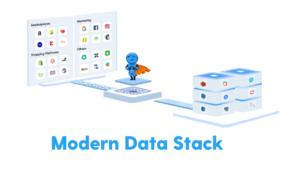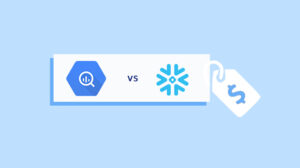Behavioral segmentation is a method of dividing a customer base into smaller groups based on their behaviors and actions. This customer segmentation method is useful for businesses because it allows them to tailor their marketing and sales efforts to specific segments of their customer base, based on how they engage with the business.
5 types of Behavioral Segmentation
Five types of behavioral segmentation:
- Occasion segmentation: This involves dividing customers based on the occasions or events that trigger their product or service needs. For example, florists might segment their customers based on occasions such as Valentine’s Day, Mother’s Day, and weddings.
- Benefit segmentation: This involves dividing customers based on the benefits they seek from a product or service. For example, a car manufacturer might segment their customers based on fuel efficiency, safety, or performance benefits.
- Attitude segmentation: This involves dividing customers based on their attitudes towards a product or service. For example, a fast food chain might its customers based on attitudes such as health-consciousness or convenience-seeking.
- Usage rate segmentation: This involves dividing customers based on their frequency of product or service usage. For example, a subscription service might segment their customers based on usage rates such as infrequent, moderate, or heavy users.
- Loyalty segmentation: This involves dividing customers based on their level of loyalty to a company or brand. For example, a credit card company might segment their customers based on loyalty levels such as low, medium, or high.
Also, read – Psychographic Segmentation
Behavioral Segmentation Examples
Here are a few examples of behavioral segmentation:
| Business | Segments | Plan for Segment |
| Coffee Chain | Daily Customers | Targeted marketing campaigns and promotions, loyalty program |
| Occasional Customers | Discounts and promotions to attract customers | |
| Clothing Retail | High-Value Customers | Customized email campaigns and recommendations, featuring expensive items in emails |
| Low-Value Customers | Customized email campaigns and recommendations, showcasing lower-cost items in recommendations | |
| Software | Engaged Customers | Customized onboarding and support experiences, personalized training sessions |
| Company | Passive Customers | Customized onboarding and support experiences, self-service resources |
| Online Retailer | Mobile-First | Optimization of mobile version of website, featuring larger product images and easier navigation |
| Desktop-First | Optimization of desktop version of website, providing more detailed product information |
Also, read:
Behavioral Segmentation in eCommerce
Here are a few examples of behavioral segmentation decision rules in eCommerce:
- Frequency of purchase: Customers can be segmented based on how often they make purchases on the eCommerce site. For example, customers who make weekly purchases could be considered a high-frequency segment, while customers who make occasional purchases could be considered a low-frequency segment.
- Purchasing history: Customers can be segmented based on their past purchasing behaviors. For example, customers who have consistently purchased high-ticket items could be considered a high-value segment, while customers with low average order value could be considered a low-value segment.
- Engagement with content: Customers can be segmented based on how they engage with content on the eCommerce site. For example, customers who frequently read product reviews or watch product videos could be considered engaged, while customers who rarely interact with content could be considered passive.
- Device usage: Customers can be segmented based on the devices they use to access the eCommerce site. For example, customers who frequently access the site from a mobile device could be considered a mobile-first segment, while customers who primarily use a desktop could be considered a desktop-first segment.
- Shopping Cart Abandonment: Customers can be segmented based on their likelihood of abandoning their cart during the checkout process. For example, customers who frequently abandon their cart could be considered a high-risk segment, while customers who rarely abandon their cart could be considered a low-risk segment.
Here’s a template table for behavioral segmentation in eCommerce with some dummy data:
|
Customer ID |
Age |
Gender |
Location |
Purchase History |
Website Activity |
Segment |
| 001 | 27 | Male | New York | High-Value | Engaged | A |
| 002 | 41 | Female | Los Angeles | Low-Value | Passive | B |
| 003 | 35 | Male | Chicago | High-Value | Engaged | A |
| 004 | 24 | Female | Houston | Low-Value | Engaged | C |
| 005 | 30 | Male | New York | High-Value | Passive | A |
| 006 | 50 | Female | Los Angeles | Low-Value | Engaged | B |
| 007 | 28 | Male | Chicago | High-Value | Engaged | A |
| 008 | 21 | Female | Houston | Low-Value | Passive | C |
| 009 | 33 | Male | New York | High-Value | Engaged | A |
| 010 | 45 | Female | Los Angeles | Low-Value | Engaged | B |
Also, read:
Challenges in implementing Behavioral Segmentation
There are a few challenges that businesses may face when implementing behavioral segmentation:
- Data collection: To accurately segment customers based on their behaviors, businesses need to have access to a large amount of data. This may require investing in tools and systems to track and analyze customer behaviors, such as website analytics platforms or customer relationship management (CRM) software. Read more – Modern Data Stack
- Changing behaviors: Customer behaviors can change over time, making it difficult to maintain accurate segmentation. For example, a customer who is a high-frequency purchaser one month may become an infrequent purchaser the next month. Businesses need to continuously monitor and update their segmentation to ensure that it remains accurate.
- Overlapping segments: It is possible for customers to belong to multiple segments based on different behaviors. For example, a customer who frequently purchases high-ticket items may also be a high-frequency purchaser. This can make it challenging to determine the most appropriate marketing and sales efforts for these customers.
- Limited resources: Segmenting customers based on their behaviors requires significant time and resources. Businesses must carefully consider whether behavioral segmentation’s benefits outweigh the costs before implementing it.
- Privacy concerns: Some customers may be hesitant to share their behaviors with businesses due to privacy concerns. This can make it difficult for businesses to obtain the data needed for behavioral segmentation. It is important for businesses to be transparent about how they collect and use customer data, and to obtain customer consent when necessary.
Conclusion
Behavioral segmentation is an important part of customer segmentation, which is a key aspect of any successful eCommerce business. By dividing customers into different segments based on their behavior, businesses can better understand and cater to their customers’ unique needs and preferences.
However, effective behavioral segmentation requires accurate and organized data management and analytics. This is where a data warehouse and a managed data operations provider like Saras can be extremely helpful. By providing businesses with a reliable and efficient system to manage their data and analyze customer behavior, Saras can help eCommerce businesses optimize their operations and drive growth.













